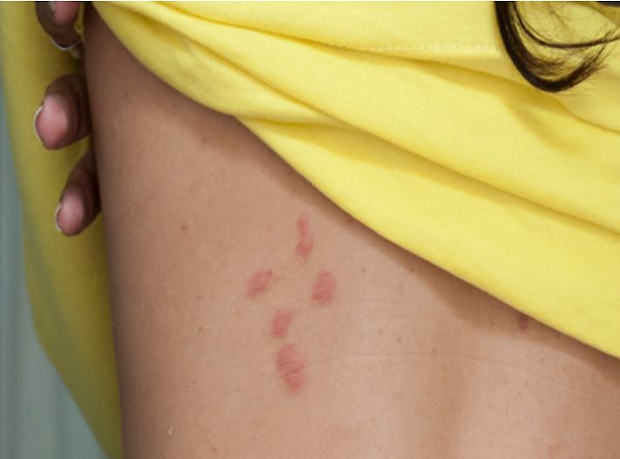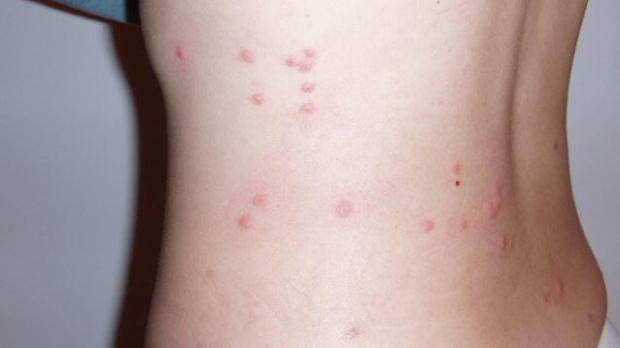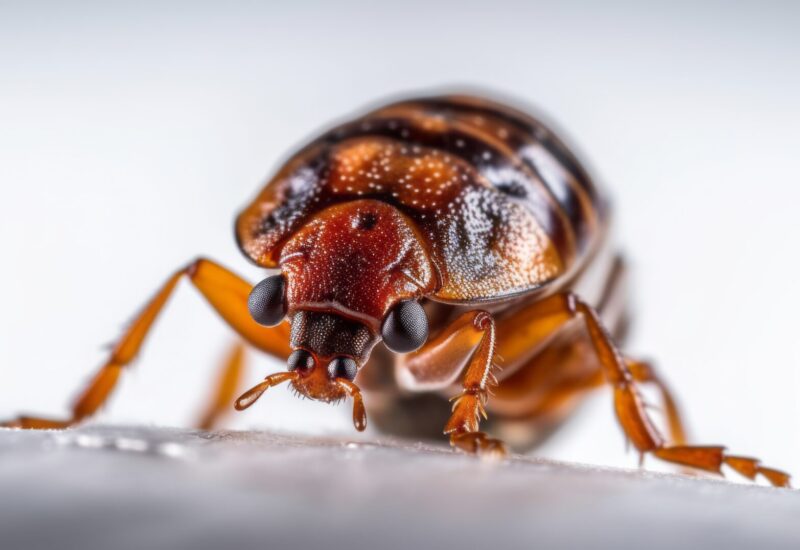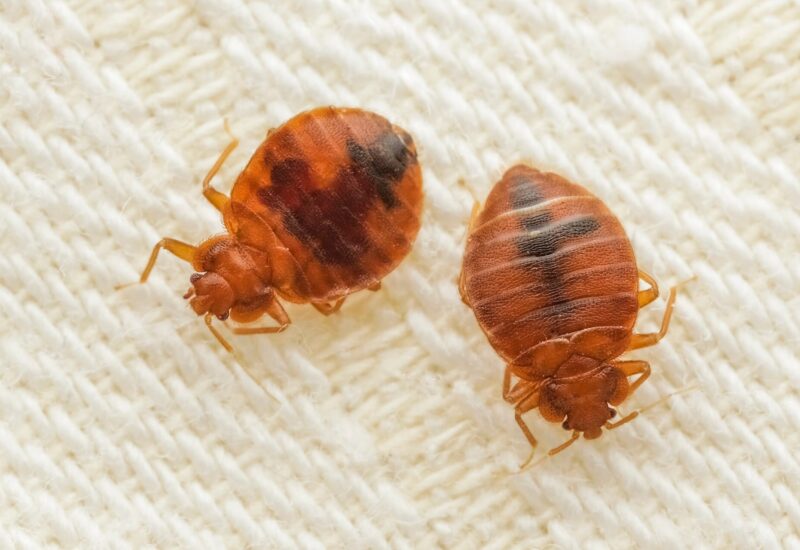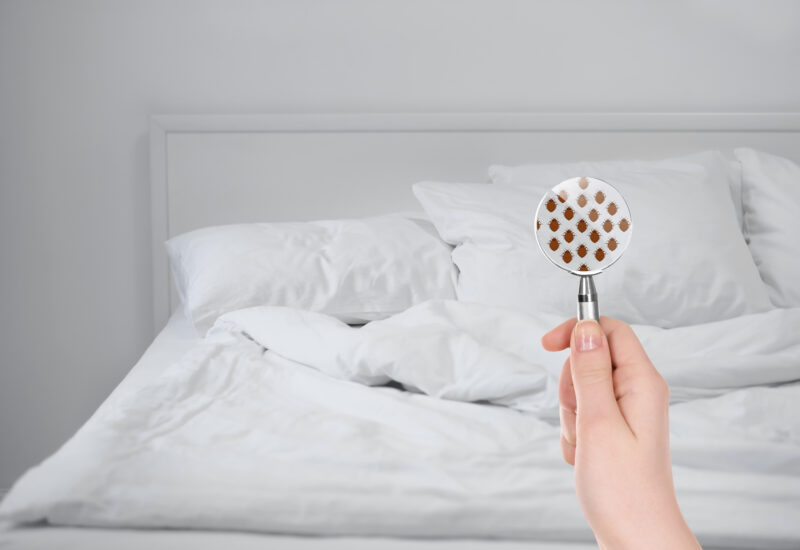Bed Bug Bite vs. Flea Bite

Learn the Difference Between Bed Bug & Flea Bites
Pests in the home are always a nuisance, but ones that bite (and feed off human blood) can not only a threaten your sanity, but also your health.
Two common household pests that can cause irritating bites are fleas and bed bugs.
While at first glance, these two insects are similar in looks, they are actually quite different and so are their bites. Knowing the difference between the two will help to alleviate confusion and allow for accurate treatment of the problem at hand.
Bed Bug Bites
The old rhyme, “Goodnight. Sleep tight. Don’t let the bed-bugs bite” is more accurate than you would like to believe. As their name suggests, bed bugs are typically found in and around your bed. They like to snuggle up next to you in your mattress, box spring, or bed frame, for ease of access. They can also be found in the carpet, on furniture and in the walls of your home or apartment (gross!). What’s more, bed bugs don’t just live in your bed, but they also feed on you at night while you’re sleeping. Yikes!
Bed Bug Bite Identification:
Location of Bite:
Bites can be found on any area of the body. However, they are typically located on the upper extremities, including arms, neck, face, or hands.
Appearance:
Bed bug bites are usually small and red with a raised center and are very itchy (the more you scratch, the worse they become). They are formed in a linear pattern. Bites may also turn into a blister like infection or cause hives in certain cases.
Frequency:
Depending on the size of the colony, bed bugs may need to feed anywhere from every couple of weeks to over a few months. Noticing when you find the bites (remember bed bugs feed at night) and tracking how often new ones are occuring may give you a clue into whether or not you are being bitten by bed bugs.
Bed bug bites should not cause irritation for longer than a week. If the bite does not go away or if an infection begins, it is best to contact a healthcare professional.
Bed Bug Prevention
Bed bugs can more than a nuisance, but an infestation could mean a serious overhauling of your home. Thankfully there are ways to help prevent an infestation from occuring:
-
Clean regularly: Bed bugs often live in dirty spaces. Vacuuming and thoroughly cleaning floors and upholstery will help to keep them out of your home.
-
Wash sheets/covers: Washing your sheets and covers can help to kill off bed bugs that may be crawling around in them. Throwing your sheets on high in the dryer will help to kill of the bugs.
-
Remove clutter: Clutter provides a great hiding place for bed bugs. Making sure your home is free from clutter removes the possibility of these nasty creepers hiding in places you can’t easily find them.
-
Thorough bed inspection: Make sure that bed bugs aren’t living with you by conducting a thorough inspection of your mattress and surrounding bed area. A flashlight is helpful when conducting the inspection as bed bugs are small and can be difficult to see.
-
Contact a pest professional: Bed bugs are no joke! If you are finding bites on yourself or anyone else in your household, it is important to call a pest professional to locate and get rid of the problem before it can get any worse.
Flea Bites
Flea bites are most common in the presence of domestic pets, but fleas can hitch a ride on any animal host, and can also live in your carpet or upholstery. Fleas can live up to 100 days, and are capable of biting a host (typically an animal) up to 400 times in a day. Unlike bed bugs, fleas bite both animals and humans, and can also be transmitters of a number of diseases. Fleas are high jumpers for their small size, jumping up to 8 inches and as far as 12 inches! As soon as a flea lands on a host, it’s feeding time.
Flea Bite Identification:
Location of Bites:
Fleas usually bite the lower parts of the body, such as the feet, ankles, and legs, but can also be found under the arms, on the waist, or other areas where the skin may fold.
Appearance:
Flea bites are small and red and usually appear in a cluster. Some are more sensitive to flea bites and therefore may break out in a reaction when bitten. Even though it may be difficult, avoid scratching flea bites, as excessive scratching can open your skin up to a secondary infection.
Flea bites should be washed off with soap and water to help avoid infection.
Flea Prevention
Fleas should feel anything but welcomed among you and your pets. You can keep fleas at bay by:
Cleaning Regularly: Vacuuming floors and steaming your rugs will help to pick up or kill fleas where they may be residing. Because fleas can jump, it’s a good idea to clean and inspect upholstery as well.
Treating/Inspecting your pets: Treating pets with flea protection (flea collars are most common), will help to reduce the number of fleas that your pet may be carrying or that may try to attach themselves to your pet. Continue to check your pet for fleas
Cutting your grass: If your pet likes to spend time outdoors, keeping your lawn trimmed helps keep the flea count low.
Contact a pest professional: If you are finding bites on yourself or others in your home, call a pest professional to help you locate and get rid of the problem.
*Photos from Healthline.com


